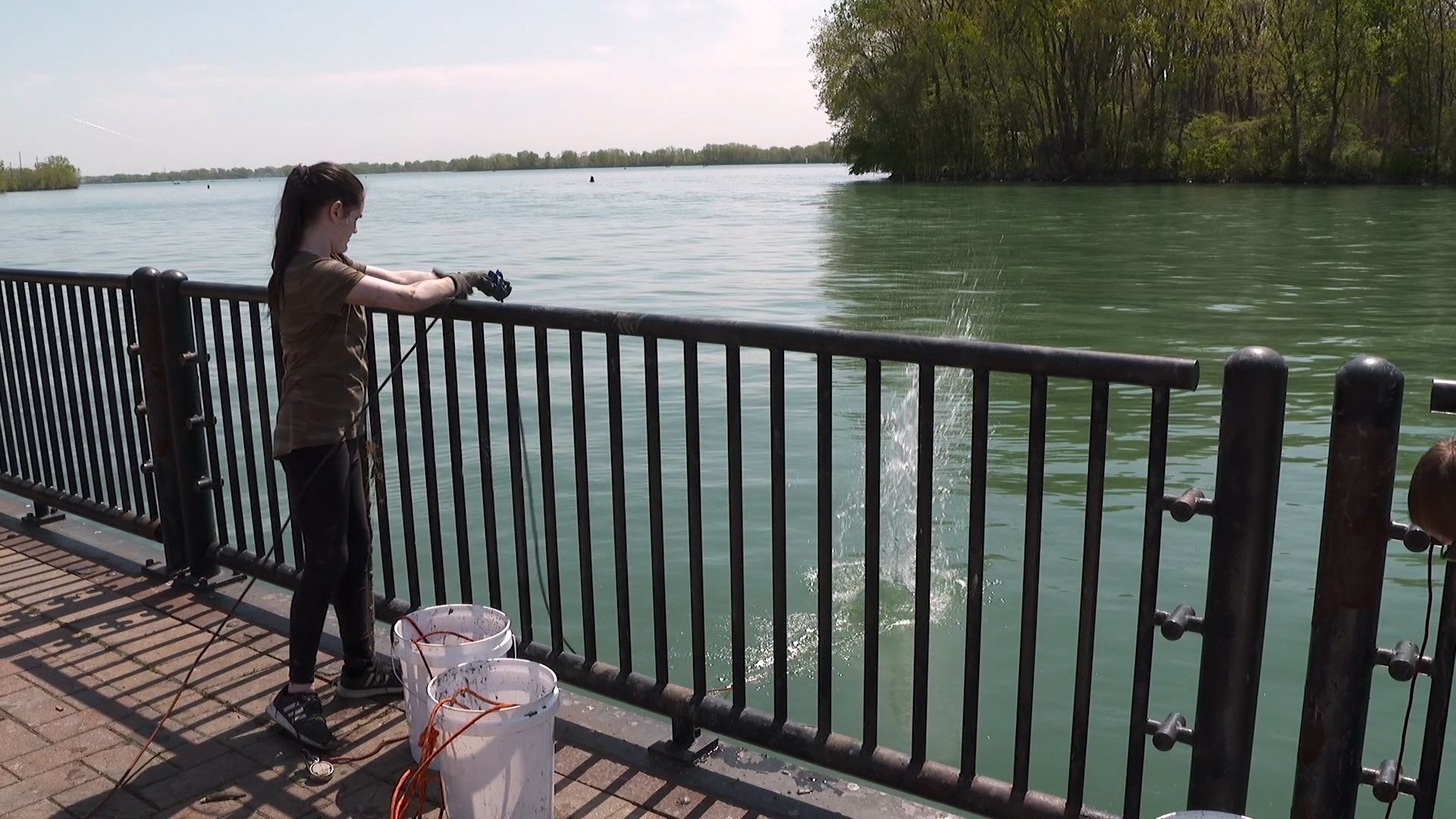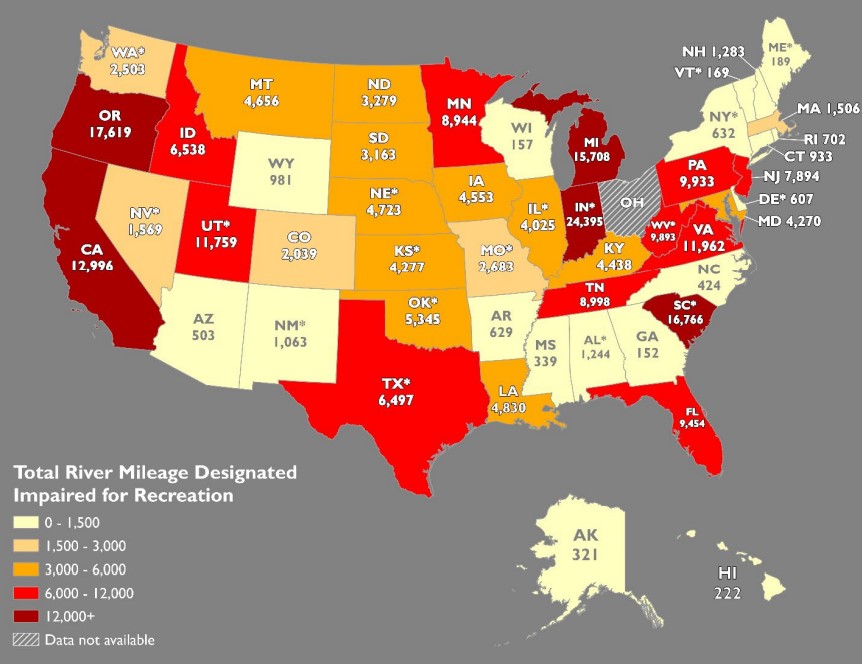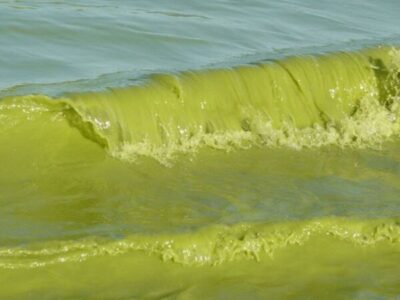
In 1972, the federal Clean Water Act proclaimed an ambitious goal – “fishable, swimmable” waters across the U.S. by 1983. Today, just over half of assessed river and stream miles across the U.S. remain too polluted for swimming and recreation, aquatic life, fish consumption, or as drinking water sources.
That assessment comes from a newly released report from the Environmental Integrity Project (EIP), a non-profit group founded in 2002 by former EPA enforcement attorneys. The group spent a year analysing state reports submitted to the EPA on the condition of their rivers, streams, lakes and estuaries.
The Great Lakes themselves were not included in the assessment because the EPA categorizes them differently than other inland lakes. Some parts of the lakes are shared with Canada, making responsibility for them more complex. Plus, the states bordering the Great Lakes use different methods for evaluating and classifying these water bodies.
However, the report did rate the Great Lakes states’ rivers and streams – many of which feed right into the Great Lakes – and found many of them wanting.
Measuring levels of fecal bacteria and other contaminants, Indiana tops the list of states with the most dirty waterways with 24,395 total miles of rivers and streams listed as impaired for swimming and recreation. While Indiana’s ranking is cause for concern, it does a better job than most states of studying its waterways, says report co-author and EIP communications director Tom Pelton.
“The more you look, the more you find,” said Pelton.
The Great Lakes state with the next greatest number of miles of polluted rivers and streams is Michigan, which ranks fourth across the country. Pennsylvania follows with the 8th worst ranking in the country, then Minnesota with the 12th worst. Illinois is the 24th worst, New York the 38th and Wisconsin comes in as the 48th worst.

States with asterisks reported useable data only for swimming and other primary water contact recreation impairments,
not for secondary water contact recreation, such as kayaking. Ohio is not included because it does not count impairments like the other states. (Image from Environmental Integrity Project)
The report omits Ohio because the state evaluates its polluted waterways by drainage area rather than miles, making comparisons impossible.
“But we know Ohio has severe problems with farm runoff and algal blooms aggravated by climate change,” said Pelton.
Across the country, Oregon is rated second in terms of the number of polluted miles of rivers and streams at 17,619 miles of rivers and streams and third is South Carolina, with 16,766 miles.
The EIP report makes several recommendations, starting with amending the Clean Water Act to close the loophole that gives a free pass to non-point sources of pollution such as farm runoff.
As the report states, “The Act includes enforceable regulatory controls for pollution piped directly into waterways from factories and sewage plants, but weak to nonexistent controls for runoff from farmland and other “nonpoint” sources of pollution that are a major threat to water quality.”
In addition, the report’s authors urge the EPA to stop neglecting its duty under the act to periodically review and update technology-based limits for water pollution control systems used by industries. Outdated standards mean more pollution from oil refineries, chemical plants, slaughterhouses and other industries pouring into waterways than if these standards had been updated on schedule.
“By 2022, two-thirds of EPA’s industry-specific water pollution standards had not been updated in more than three decades, despite the law’s mandate for reviews every five years to keep pace with advances in treatment technologies,” the report states.
The EIP report also recommends Washington and state legislatures reverse funding cuts to both the federal EPA and state agencies.
“The more you cut the scientists, the more you cut the inspectors, the less you know about your own waters,” said Pelton.
In a written statement from the federal EPA in Washington, the agency said it “recognizes that significant challenges remain and the agency is committed to working toward a clean water future for all Americans.”
The agency said it periodically reviews the existing Effluent Guideline regulations, and updates them, “as appropriate.”
In response to the report’s criticism that the Clean Water Act gives a free pass to non-point sources of pollution such as farm runoff, the EPA acknowledged that most non-point source pollution controls “rely on voluntary program participation, interagency cooperation, and partnership-building.”
In its statement, the agency said that a few states proactively control non-point source pollution “through a single law or connected series of regulations” and pointed to success stories on its NPS Success Story Webpage.
The report is the EIP’s first on the Clean Water Act, but previous reports and lobbying efforts have met with some success. In December 2021, oil and gas giant BP agreed to pay a $512,450 penalty and reduce soot emissions from its Whiting refinery on the shore of Lake Michigan in Indiana under an agreement with regulators and activists, including the EIP.
While the Clean Water Act report underlines a depressing lack of recent progress, Pelton is keen to point out that in its first three decades, it achieved a lot. The act directed more than $1 trillion in investments into wastewater treatment plants and drove substantial improvements in water quality.
“Now we need to finish the job,” he said.
Catch more news at Great Lakes Now:
Illinois environmental justice bill would help residents prevent pollution
Filter Fix: Study shows washing machine filters keep harmful microfibers out of the Great Lakes
Featured image: Learning to magnet fish in the Detroit River (Great Lakes Now Episode 1029)




